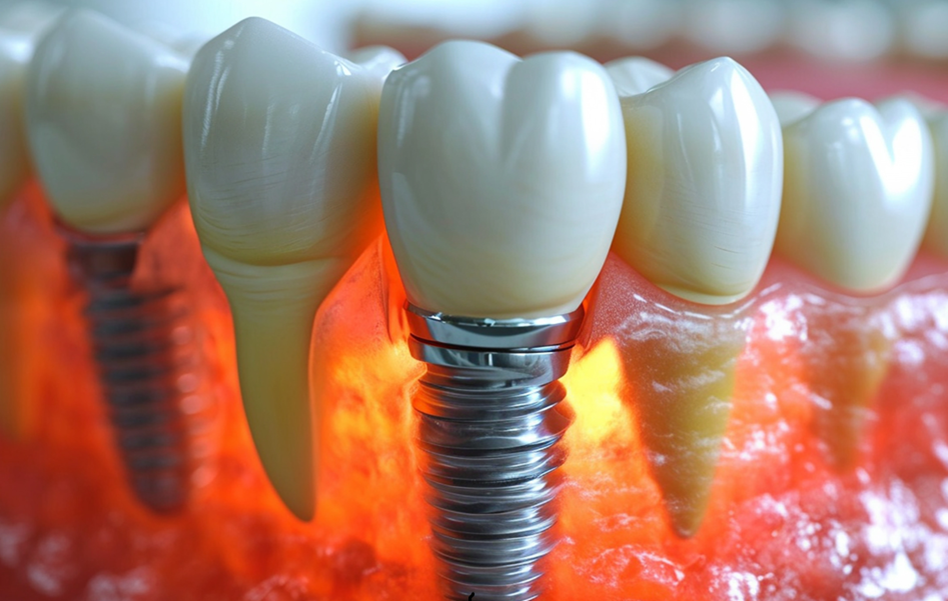Non Toxic Dental Fillings : BPA, BHT, HMBP, DPCL, TPSb, HEMA, TEGDMA Free
 Admin - General » Holistic
Admin - General » Holistic
 Jan 30, 2024
Jan 30, 2024
Non Toxic Dental Fillings
The use of non-toxic dental fillings and biocompatible materials is gaining attention in the field of dentistry due to concerns about the potential health risks associated with traditional materials like amalgam and certain composite fillings. Here are some key points about non-toxic dental fillings:
- Amalgam Fillings: Amalgam fillings, also known as silver fillings, contain a mixture of metals, including mercury. While amalgam fillings have been used for many years and are known for their durability, there have been concerns about the release of mercury vapor, a toxic substance, over time.
- Composite Fillings: Traditional composite fillings are a mixture of plastic resin and glass or ceramic particles. While these fillings are tooth-colored and esthetically pleasing, some concerns have been raised about the potential presence of toxic substances in certain composite materials.
- Biocompatible Materials: Non-toxic or biocompatible dental materials are those that are considered safe and compatible with the body. This includes materials that do not contain harmful substances and are less likely to cause adverse reactions or contribute to health risks.
- Top Dentists’ Preference: As mentioned, some top dentists may opt for safer and biocompatible materials in their dental work. This choice is often driven by a commitment to patient health, aesthetics, and a desire to avoid potential risks associated with traditional filling materials.
- Safer Alternatives: Non-toxic filling materials may include various options, such as composite materials that are free from harmful chemicals, ceramic fillings, glass ionomer fillings, and other biocompatible choices. These alternatives aim to provide effective restoration while minimizing potential health risks.
- Individualized Treatment: The choice of filling material can depend on factors such as the location and size of the cavity, the patient’s oral health, aesthetic considerations, and any specific health concerns or sensitivities.
Non-Toxic Dental Fillings
Non-toxic dental fillings made with porcelain (ceramic) as a safer alternative to traditional materials like silver fillings and composite resin fillings. Here are the key points about porcelain fillings:
Porcelain Fillings
- Advantages Over Silver and Composite Resin Fillings:
- Low Chance of Allergic Reactions or Adverse Health Effects: Porcelain is described as an inert, non-toxic material, minimizing the risk of allergic reactions or adverse health effects.
- Tooth-Colored Aesthetics: Porcelain fillings can be matched to the exact color of natural teeth, providing an aesthetically pleasing, tooth-colored appearance.
- Natural Tooth Structure Completion: Porcelain fillings are designed to complete the natural tooth structure, offering comparable or superior strength compared to natural teeth.
- Longevity: Porcelain fillings are highlighted as the longest-lasting biocompatible dental fillings available in dentistry today, typically lasting for at least 15 years and often longer.
Non-Toxic Composite Resin Fillings
Composite Resin Fillings
- Composition:
- Composite resin fillings are commonly made from a combination of plastic and glass materials.
- Variability in Composition:
- Not all composite resin fillings have the same composition.
- Early composite resins included chemicals like BPA.
- Toxic Chemicals in Composite Resin
- Many composite resins still contain potentially toxic substances, including:
- BPA (Bisphenol A)
- BisGMA
- BHT
- HMBP
- DPCL
- TPSb
- HEMA
- TEGDMA
- Many composite resins still contain potentially toxic substances, including:
BPA Concerns
- Endocrine Disruption:
- BPA has been linked to endocrine disruption.
- Potential adverse effects on fetal development, reproduction, and growth have been associated with BPA exposure.
Recommendations
- Request BPA-Free Composite Resin:
- If you require dental bonding for procedures like fixing a chipped tooth or treating minor tooth decay, it is advisable to request the use of composite resin that is specifically labeled as BPA-free.
- Ideally, inquire about composite resins that are also free from other potentially harmful chemicals mentioned above.
BPA-Free Fillings
- Composition and Functionality:
- BPA-free fillings are described as being exactly the same as normal composite white fillings, offering the same functions.
- They come in different shades to match natural teeth, providing aesthetic benefits.
- BPA and Controversy
- Bisphenol (BPA) is an organic compound found in materials used to make plastics.
- BPA has been a subject of controversy due to its weak but detectable hormone-like properties.
- Governments worldwide have implemented bans on BPA in the manufacturing of food containers and baby bottles.
- Reduced Resin Content
- Composite fills are completed with a restorative material that contains 30-50% less resin compared to many other composite brands.
- The reduction in resin content aims to minimize the presence of trace amounts of bisphenols.
- Biocompatibility and Testing
- The composite filling used in the holistic dental practice is stated to be free from both Bisphenol A and B.
- The composite material is highlighted as testing high for biocompatibility among patients.
Holistic Dental Approach
- Holistic Perspective:
- The use of BPA-free fillings aligns with a holistic dental approach, emphasizing overall health and well-being.
- Biocompatibility Considerations:
- Biocompatibility testing is mentioned as part of the evaluation of the composite material used in dental practice.
Regulatory Context
- Government Bans on BPA
- Mention is made of governmental bans on BPA, particularly in the manufacturing of food containers and baby bottles.
Patient Considerations
- Aesthetic Options:
- BPA-free fillings are presented as an option that not only addresses health concerns but also provides aesthetic choices for patients.
- Holistic Dental Practices
- The dental practice is characterized as holistic, emphasizing a broader perspective on oral health.
In summary, the information emphasizes the equivalence of BPA-free fillings to normal composite white fillings in terms of functionality and appearance. The use of these fillings is presented as a conscious choice aligned with holistic dental practices, considering both health and aesthetic considerations for patients.
Importance of Awareness
- Patient Advocacy:
- Patients are encouraged to be proactive in their dental care by being aware of the materials used in dental procedures.
- Discussing concerns with the dentist and requesting alternatives is a way to advocate for one’s health.
The information emphasizes the potential risks associated with certain chemicals present in composite resin fillings, particularly BPA, and encourages patients to communicate with their dentists to ensure the use of safer alternatives during dental procedures.
Trending News
-

Non Toxic Dental Fillings : BPA, BHT, HMBP, DPCL, TPSb, HEMA, TEGDMA Free Admin
-

Essential Questions for Your Oral and Maxillofacial Surgeon Admin
-

Regenerative Endodontics Admin
-

Understanding the Risks and Causes of Dental Implant Failures Admin
-

Why Root Canals Fail? | The Usual Suspects Meredith Y. Newman Endodontist Fresno
